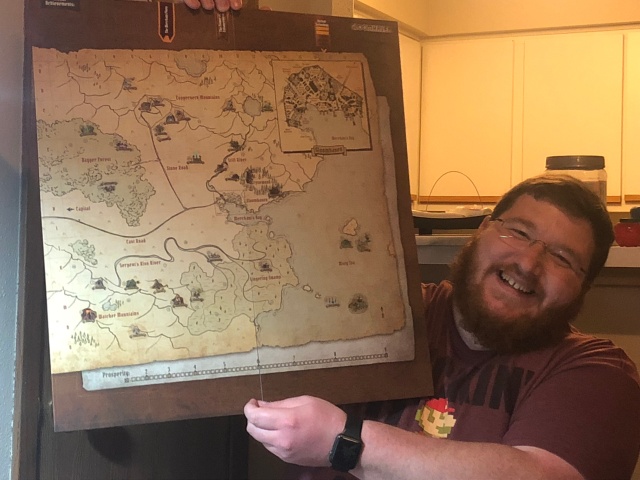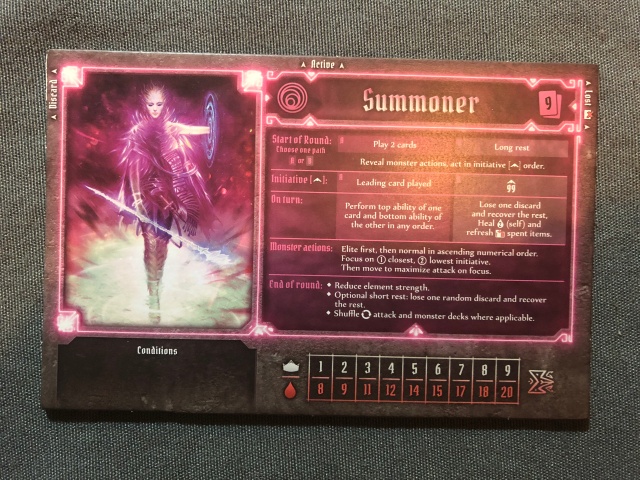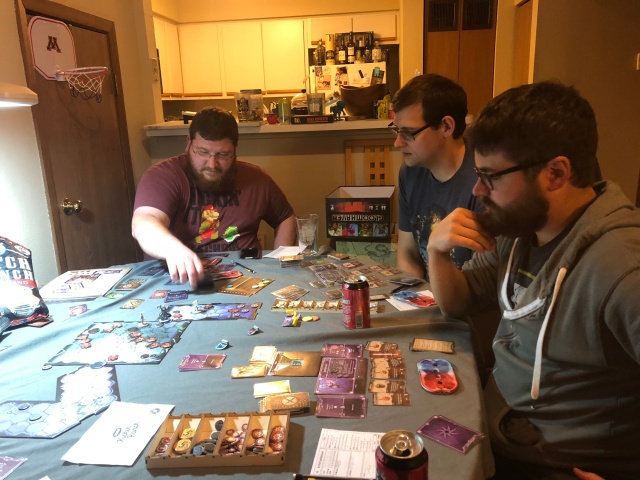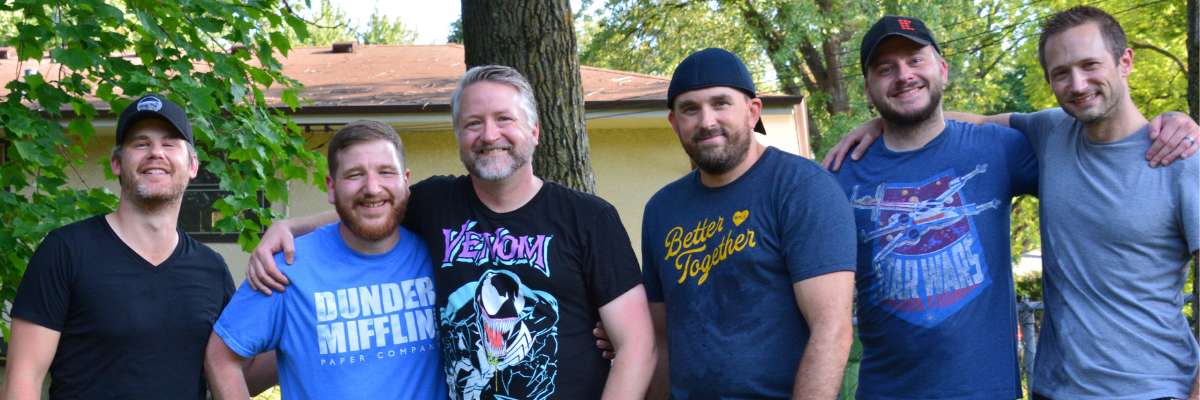Some board games are fun. Some board games are long. And then there is Gloomhaven, the face-melting Euro-style game by Cephalofair Games. It’s a lot like Leonardo DiCaprio – it’s one of the biggest stars in the board gaming world, it’s got a lot of depth and it always brings quality.
I recently had a chance to sit in on a friend’s session, and came away with a healthy respect for the breadth and depth of the game. I expected it to be similar to Dungeons and Dragons (D&D) with parties working together to complete quests while slowly increasing in power. Most of my preconceptions turned out to be off the mark.
What is Gloomhaven?
Gloomhaven is a tactical campaign-driven fantasy board game for one to four players. Play consists of a series of encounters loosely tied together in an epic campaign. You and your friends play as mercenaries, working together while trying to accomplish your own hidden agendas. Over the course of multiple sessions you will level your character up, find and buy new gear, accomplish hidden tasks and slay a bunch of monsters.
The whole game centers on the town of Gloomhaven. You have the choice do good things for the town, or good things for the party/bad things for the town. Your reputation goes up or down, which will increase or decrease items’ cost and whether or not you earn prosperity for the town.
As you play through scenarios, you unlock new scenarios. To help keep track of all these options, the game comes with a map, and stickers, to track your options.

How does it work?
Each player controls a unique character, with their own deck of action cards, perks and upgrade options. On their turn, each player will play two cards, using the top action off one card and the bottom action off another. These cover movement, attacks and special abilities.
Once your cards are played they go into your discard pile. Once you are out of cards you have to rest, which returns the cards from your discard pile to your hand, minus one. If you run out of cards during an adventure, you are exhausted and forced to retreat. If none of your options are useful in your current situation, each card can be used as a movement of two or an attack of two. This can keep you in the fight, but can cost you valuable turns to complete the scenario.

What about the ass-kicking?
One of the way Gloomhaven stands apart from D&D and other tabletop RPGs is combat. Your character’s deck will have a variety of attacks and special abilities. You have to balance your need for mobility with attack options. Attacks can be melee or ranged, or they can be area of affect.
You use the action on your turn, and flip over a random attack modifier to determine if your attack hits and how much damage it does. Monsters have a set amount of health, and once you do damage up to that point, the monster dies and drops a coin. The value of the coin is determined by the level of monsters you are currently fighting. There is a formula that determines the exact value, but suffice it to say, that the higher the monster level, the better the loot.
When you are attacked, you also have the option to discard a card from your hand or two from your discard pile to the lost pile to negate the attack. If your character’s health is reduced to zero, they are exhausted and withdraw from the scenario. This can make it more challenging for the rest of the group, but does not necessarily mean the party will lose.
Let’s level up!
When you start the game, you choose a character and draw two Personal Quests. You choose one and that’s your motivation for the life of your character. As you play, you gain experience for a variety of actions, like performing attacks or healing. When you gain enough experience your character levels up, and you choose new options for their deck and a perk.
The upgrades are wild and varied, while the perks are all customized for the individual characters. Some perks can include removing negative attack modifiers or add other boons. You also make progress towards perks from completing a secret Battle Goal in each session. As a general rule, you gain one perk for every three secret objectives completed, in addition to one at each level.

Starting over within the campaign
Once your character reaches level nine, they stop gaining experience. The goal is to complete your personal quest, which will make your character retire and become an NPC in the titular city. As your group completes scenarios, the prosperity level of Gloomhaven will rise. As the level of the city increases, the starting level of characters rises along with it. Once a personal quest is completed, it is removed from the game. Increasing the prosperity opens new town records, which releases more story information and new options for the party.
Characters retiring poses unique challenges to the group as characters are added and removed. With limited options in each character’s deck, you get used to your allies’ movements. When they say they are acting early, you learn to expect a certain action, and base your own plan around it. As characters retire, not only is a player learning a new character, but the rest of the group is learning to adapt as well.
My friends, like any sane and logical people, have a retirement party for the characters that move on, complete with cake.
So it’s Just D&D?
Gloomhaven stands apart from tabletop RPGs in a couple key ways. First, there are no dice at all. Second, there doesn’t have to be a Dungeon Master. You don’t have to have someone commit a giant amount of time above the other characters. It’s also a lot quicker with character creation. There’s very little time commitment outside of game-playing.
That is a quick and dirty rundown of Gloomhaven, as observed through one play session. It looks like an amazing experience if you aren’t scared off by the financial or time commitment. Are you already invested? Did I butcher any key points? Share your thoughts via twitter or email.

